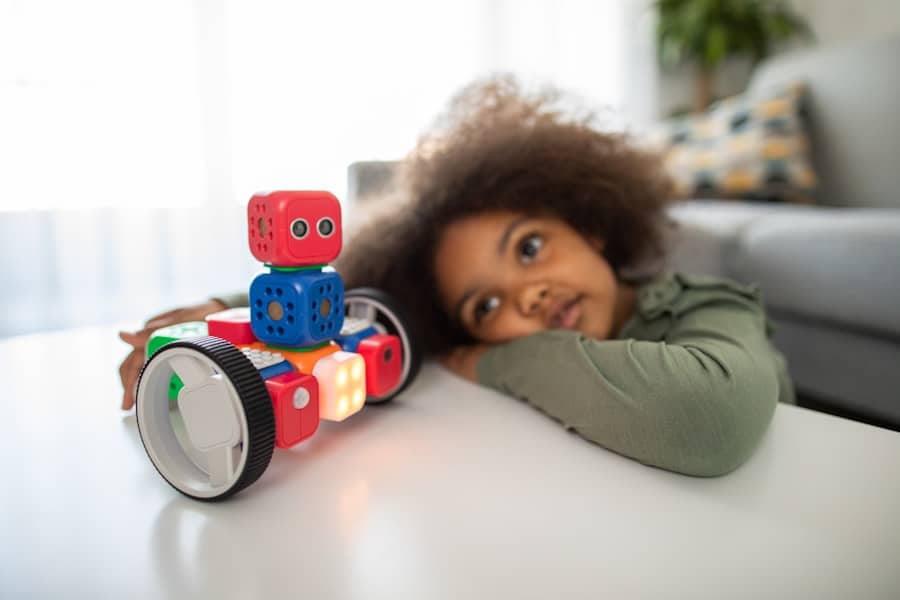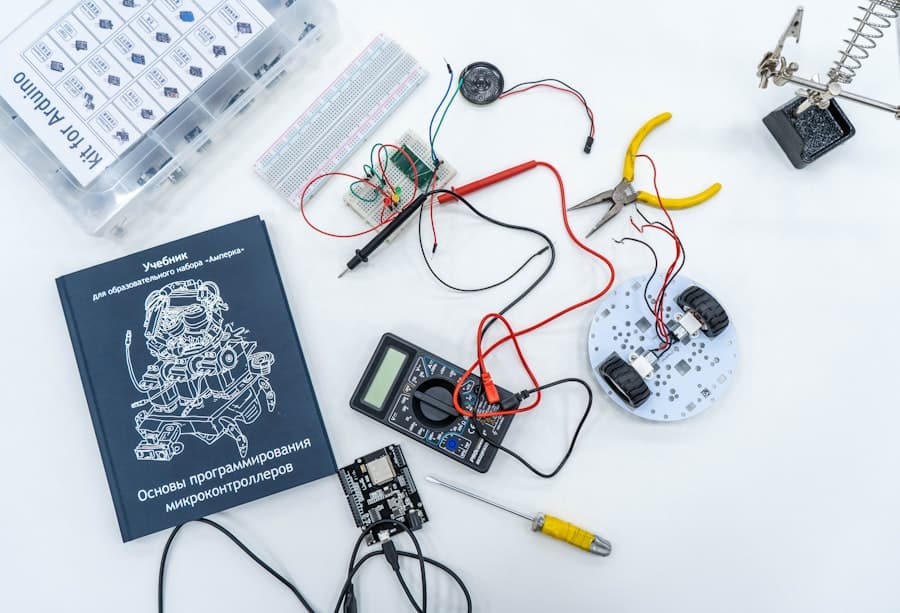The history of robotics in space exploration is a fascinating narrative that intertwines human ingenuity with the quest for knowledge beyond our planet. The journey began in the mid-20th century, a period marked by the Cold War and the space race between the United States and the Soviet Union. One of the earliest examples of robotic technology in space was the Soviet Union’s Luna program, which launched a series of robotic spacecraft to explore the Moon.
In 1959, Luna 1 became the first human-made object to reach the vicinity of the Moon, paving the way for subsequent missions that would land on its surface and return data about its composition and environment. As technology advanced, so did the complexity and capabilities of robotic systems. The 1970s saw significant milestones with NASA’s Viking program, which sent two robotic landers to Mars.
Viking 1 and Viking 2 not only conducted experiments to search for signs of life but also transmitted high-resolution images of the Martian surface back to Earth. These missions marked a turning point in space exploration, demonstrating that robots could perform intricate tasks in hostile environments, laying the groundwork for future explorations of other celestial bodies.
Key Takeaways
- Robotics have played a crucial role in space exploration since the 1960s, with the first robotic spacecraft being the Soviet Union’s Luna 2 in 1959.
- Modern space missions heavily rely on robotics for tasks such as satellite deployment, maintenance of space stations, and planetary exploration.
- Advancements in robotic technology, such as AI and autonomous navigation, have enabled more complex and efficient space exploration missions.
- Challenges in using robotics in space include the harsh environment, communication delays, and the need for precise and reliable operation.
- The future of robotics in space exploration holds promise for more advanced missions, including the potential for robotic exploration of other planets and moons.
The Role of Robotics in Modern Space Missions
In contemporary space missions, robotics plays an indispensable role, enhancing our ability to explore and understand the cosmos. Modern spacecraft are often equipped with sophisticated robotic systems that can perform a variety of functions, from conducting scientific experiments to repairing equipment in orbit. For instance, the Mars rovers—such as Curiosity and Perseverance—are equipped with advanced robotic arms that allow them to drill into the Martian soil, analyze rock samples, and conduct in-situ experiments.
These rovers are not merely mobile laboratories; they are autonomous explorers capable of making decisions based on their surroundings, which is crucial given the communication delays between Earth and Mars. Moreover, robotics has revolutionized satellite technology. Satellites equipped with robotic arms can perform maintenance tasks in orbit, such as refueling or repairing other satellites.
The International Space Station (ISS) utilizes robotic systems like the Canadarm2, a versatile robotic arm that assists astronauts in various tasks, including capturing visiting spacecraft and conducting repairs outside the station. This integration of robotics into modern missions not only enhances operational efficiency but also reduces risks to human astronauts by allowing robots to handle dangerous tasks.
Advancements in Robotic Technology for Space Exploration

The field of robotics has witnessed remarkable advancements that have significantly enhanced our capabilities in space exploration. One of the most notable developments is the integration of artificial intelligence (AI) into robotic systems. AI enables robots to process vast amounts of data in real-time, allowing them to make autonomous decisions based on their environment.
For example, NASA’s Perseverance rover employs AI algorithms to navigate the Martian terrain autonomously, identifying obstacles and selecting optimal paths without waiting for instructions from Earth. Another significant advancement is the development of more sophisticated sensors and instruments that enhance a robot’s ability to gather data. Modern rovers are equipped with high-resolution cameras, spectrometers, and environmental sensors that allow them to analyze soil composition, detect atmospheric conditions, and capture stunning images of distant landscapes.
These advancements not only improve our understanding of other planets but also facilitate the search for extraterrestrial life by enabling detailed analysis of potential biosignatures.
The Challenges and Limitations of Using Robotics in Space
Despite the numerous advantages that robotics brings to space exploration, several challenges and limitations persist. One major challenge is the harsh environment of space itself. Robotic systems must be designed to withstand extreme temperatures, radiation levels, and micrometeoroid impacts.
For instance, rovers sent to Mars must endure temperature fluctuations that can range from minus 195 degrees Fahrenheit at night to a scorching 70 degrees Fahrenheit during the day. Engineers must carefully select materials and design components that can function reliably under these conditions. Another limitation is the communication delay between Earth and distant spacecraft.
For example, when sending commands to a rover on Mars, there can be a delay of up to 20 minutes one way due to the vast distance between the two planets. This delay complicates operations, as robots must often operate autonomously without real-time input from mission control. While advancements in AI have mitigated some of these issues by allowing robots to make decisions independently, there are still scenarios where human intervention is necessary, highlighting the ongoing need for a balance between robotic autonomy and human oversight.
The Future of Robotics in Space Exploration
Looking ahead, the future of robotics in space exploration appears promising, with several exciting developments on the horizon. One area of focus is the potential for collaborative robotics, where multiple robotic systems work together to achieve complex tasks. For instance, future missions may involve swarms of small robots that can collectively explore a planetary surface or assemble structures in space.
Additionally, advancements in propulsion technology may enable robots to explore more distant celestial bodies. Concepts such as ion propulsion or solar sails could allow robotic missions to reach outer planets or even interstellar destinations more efficiently than traditional chemical rockets.
As we continue to push the boundaries of exploration, robotics will play a crucial role in enabling humanity to venture further into the cosmos than ever before.
Robotic Exploration of Other Planets and Moons

Robotic exploration has already provided invaluable insights into our solar system’s planets and moons, but there remains much more to discover. Missions like NASA’s New Horizons have expanded our understanding of distant objects such as Pluto and its moons. Launched in 2006, New Horizons conducted a flyby of Pluto in 2015, sending back stunning images and data that revealed a complex world with mountains made of ice and vast plains.
The exploration of moons such as Europa and Enceladus is particularly intriguing due to their potential subsurface oceans that may harbor life. Future missions are being planned to send robotic landers or orbiters to these icy worlds to investigate their habitability further. For example, NASA’s Europa Clipper mission aims to conduct detailed reconnaissance of Europa’s ice shell and subsurface ocean using advanced instruments capable of analyzing its composition.
The Impact of Robotics on Human Space Exploration
The integration of robotics into human space exploration has transformed how astronauts conduct missions beyond Earth. Robotic systems serve as essential tools that enhance safety and efficiency during spaceflights. For instance, during extravehicular activities (EVAs), astronauts rely on robotic arms like Canadarm2 on the ISS to assist with tasks such as satellite repairs or station maintenance without exposing themselves to unnecessary risks.
Moreover, robotics can play a vital role in preparing for future human missions to Mars or beyond. Robotic precursors can scout potential landing sites, analyze soil samples for resources like water or fuel, and even construct habitats before humans arrive. This approach not only reduces risks but also ensures that astronauts have a safe environment upon arrival.
Ethical Considerations in the Use of Robotics in Space
As we continue to advance our capabilities in robotic space exploration, ethical considerations become increasingly important. One significant concern is the potential impact on extraterrestrial environments. The introduction of robotic systems could inadvertently contaminate pristine ecosystems on other planets or moons, raising questions about planetary protection protocols.
Ensuring that our robotic explorers do not disrupt potential biospheres is crucial for preserving scientific integrity. Additionally, there are ethical implications surrounding decision-making autonomy in robotic systems. As AI becomes more integrated into space exploration, questions arise about accountability when autonomous robots make decisions that could impact mission outcomes or even human lives.
Establishing clear guidelines for how robots should operate in uncertain situations is essential for maintaining ethical standards in space exploration. In conclusion, robotics has become an integral part of space exploration, shaping our understanding of the universe while presenting both opportunities and challenges. As we look toward future missions and advancements in technology, it is imperative to navigate these ethical considerations thoughtfully while continuing to push the boundaries of what is possible beyond our planet.
In the realm of space exploration, robotics has played a pivotal role in advancing our understanding of the cosmos. As we delve into the intricacies of robotic technology in space missions, it’s essential to consider the broader technological landscape that supports these advancements. An interesting related article is Discover the Best AI Video Generator Software Today, which explores the cutting-edge AI technologies that are revolutionizing content creation. This article highlights how AI-driven tools are not only transforming media but also have potential applications in enhancing the capabilities of robotic systems used in space exploration, offering new ways to process and analyze data collected from distant planets and celestial bodies.
FAQs
What is robotics in the context of space exploration?
Robotics in the context of space exploration refers to the use of robotic systems and technologies to perform tasks and gather data in space. These systems can be used for a variety of purposes, including planetary exploration, satellite servicing, and space station maintenance.
How have robotics contributed to space exploration?
Robotics have significantly contributed to space exploration by enabling the exploration of distant planets and celestial bodies, performing complex tasks in space, and reducing the risk to human astronauts. Robotic systems have been used to conduct experiments, collect samples, and even build structures in space.
What are some examples of robotic missions in space exploration?
Some examples of robotic missions in space exploration include the Mars rovers, such as Spirit, Opportunity, and Curiosity, which have explored the surface of Mars and provided valuable data about the planet. Additionally, robotic spacecraft like the Voyager probes have traveled beyond our solar system, providing insights into the outer reaches of space.
What are the advantages of using robotics in space exploration?
Using robotics in space exploration offers several advantages, including the ability to perform tasks in harsh environments without risking human lives, the potential for longer mission durations, and the ability to gather data from remote locations. Robotics also allow for more cost-effective exploration of space.
What are the future prospects for robotics in space exploration?
The future of robotics in space exploration looks promising, with advancements in artificial intelligence, autonomous navigation, and robotic manipulation. Future missions may involve more sophisticated robotic systems that can perform a wider range of tasks, such as assembling structures in space or conducting complex scientific experiments.

